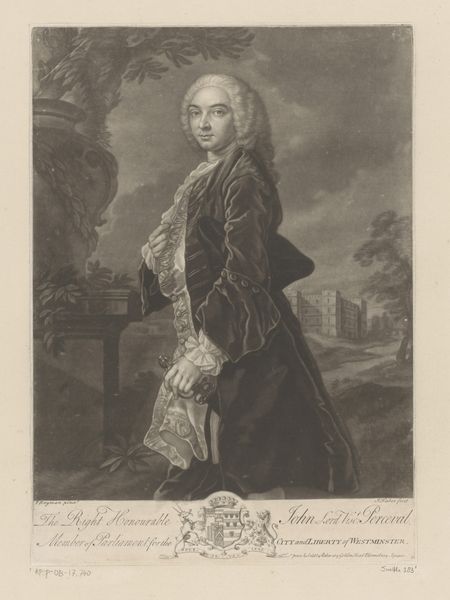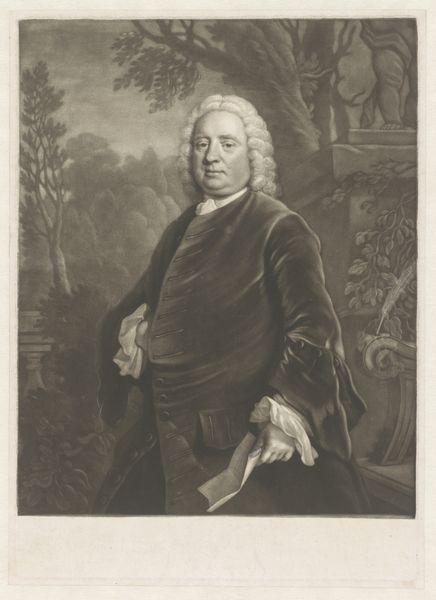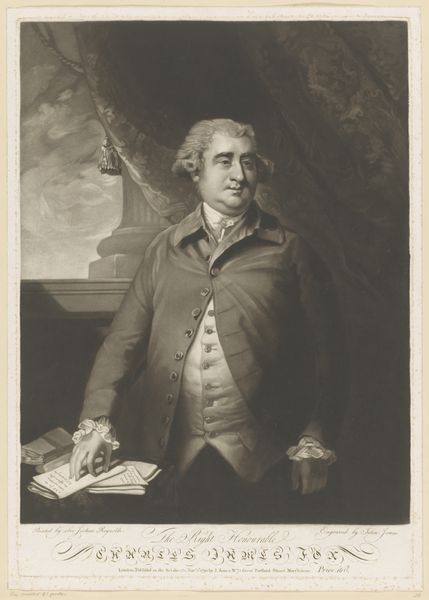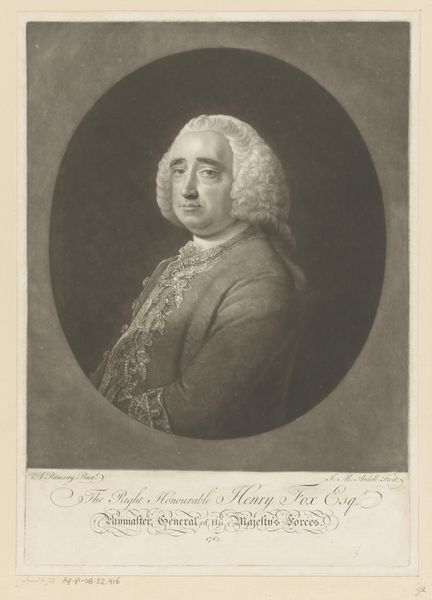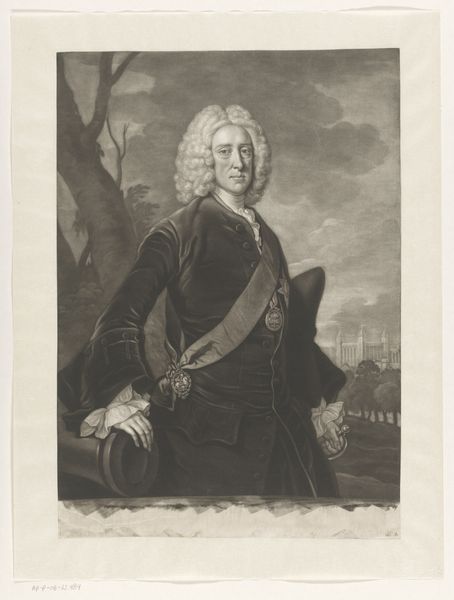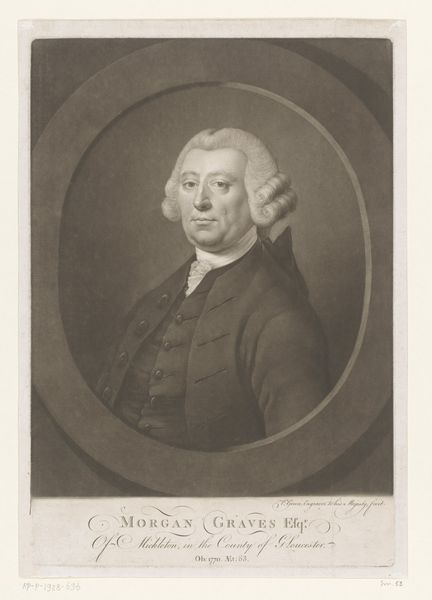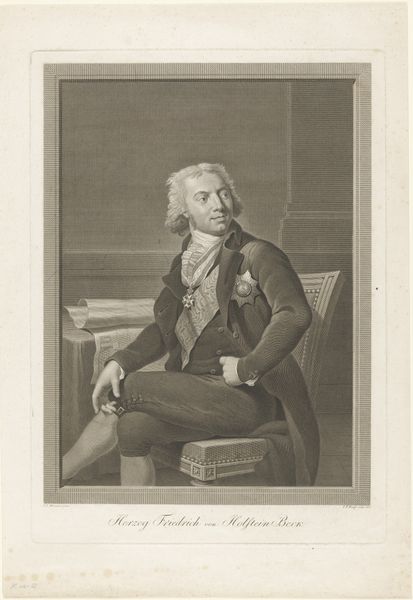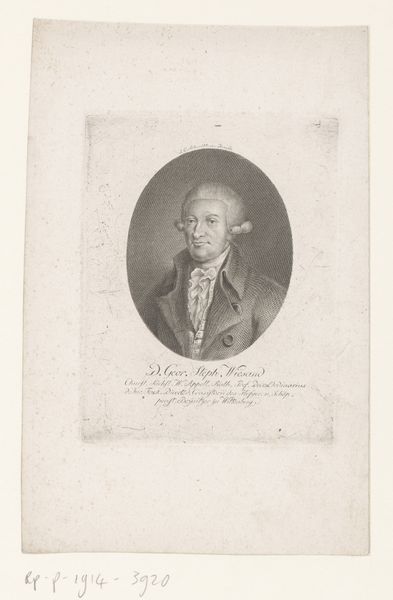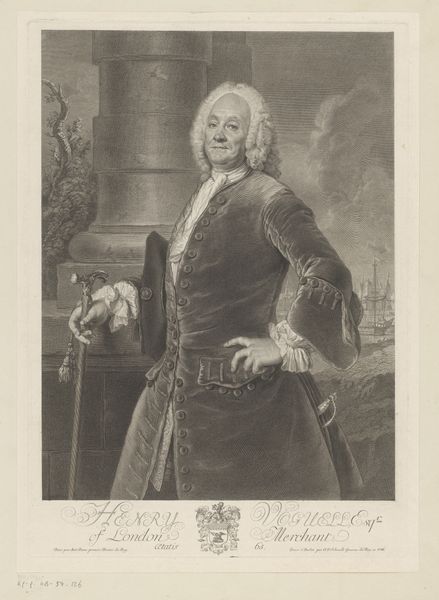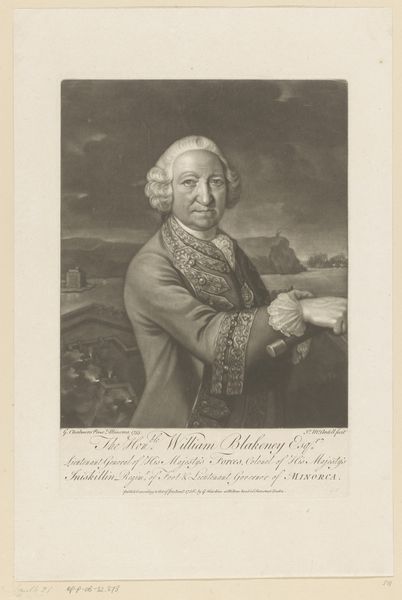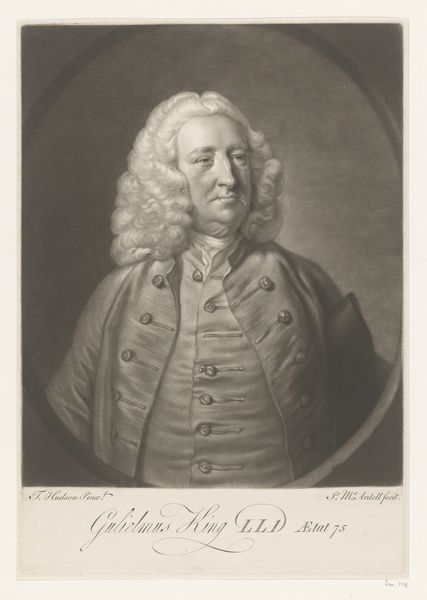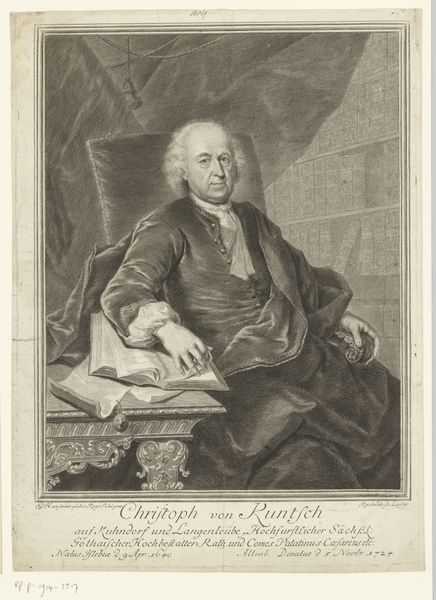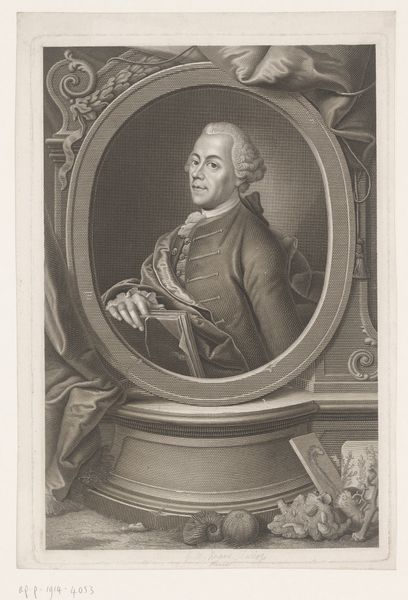
Dimensions: height 353 mm, width 251 mm
Copyright: Rijks Museum: Open Domain
Curator: This engraving, crafted in 1761 by James McArdell, presents us with a portrait of Benjamin Franklin. The artwork, currently held at the Rijksmuseum, exemplifies Baroque sensibilities while employing a predominantly linear style using the engraving printmaking method on paper. Editor: It's quite imposing, isn't it? The chiaroscuro is very dramatic, casting Franklin partially in shadow, and the stormy scene visible behind him adds an unexpected element of turbulence. It feels weighty, conveying both the subject's significance and the artist's command of the medium. Curator: The composition does strike a balance. Notice how McArdell uses the atmospheric perspective in the background to flatten the city's image behind Franklin while directing the eye toward the figure’s face using an imaginary triangle, where Franklin's gaze anchors the composition. Editor: But why the tempestuous weather? It could represent the political storms Franklin was navigating at the time or simply to establish his relationship to electricity through that bolt of lightning. More broadly, the use of this type of stormy scene becomes very popular with the onset of colonialism as an active visual backdrop. Curator: A reasonable point. McArdell was a skilled engraver known for his mezzotint technique that predates this artwork. Observe the meticulous layering and tonal graduations achieved through cross-hatching, very characteristic of Baroque line-engraving techniques of this moment. The rendering creates depth, enriching Franklin’s facial expression. Editor: His expression is a mix of intensity and weariness. Franklin looks directly at the viewer, suggesting a shared responsibility, perhaps hinting at the burden of leadership he carried. His legacy must include uncomfortable conversations regarding the uncompensated labor that underpinned the nation he helped found, something starkly contrasted by his own accomplishments displayed alongside him in this frame. Curator: Such socio-political considerations are necessary now. Still, the linear forms used to outline his coat create such visual weight; it contributes to the subject's presence and elevates his visual importance within this small print. Editor: Absolutely, these elements contribute to the narrative, reminding us that representation, whether political or artistic, always occurs within power dynamics, often reflecting or even reinforcing inequities. That point aside, a fantastic reminder of a tumultuous period in the history of social and technical evolution through printmaking.
Comments
No comments
Be the first to comment and join the conversation on the ultimate creative platform.
